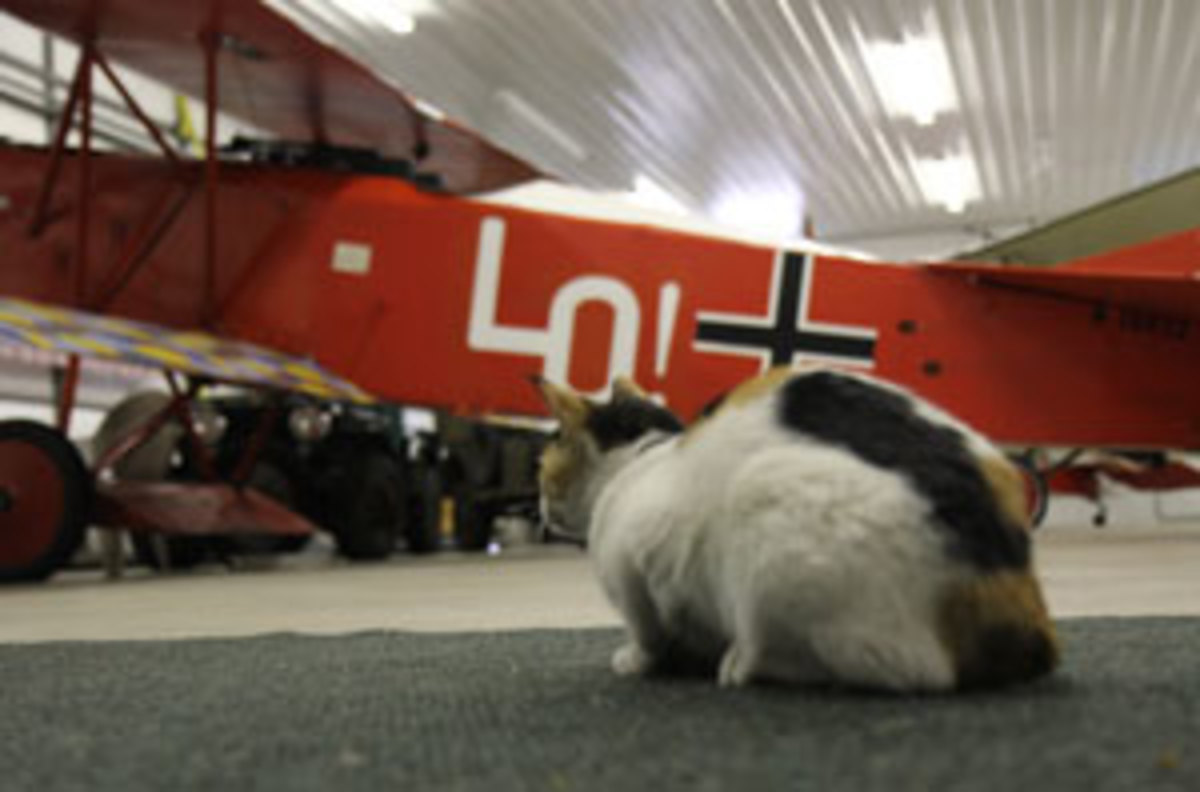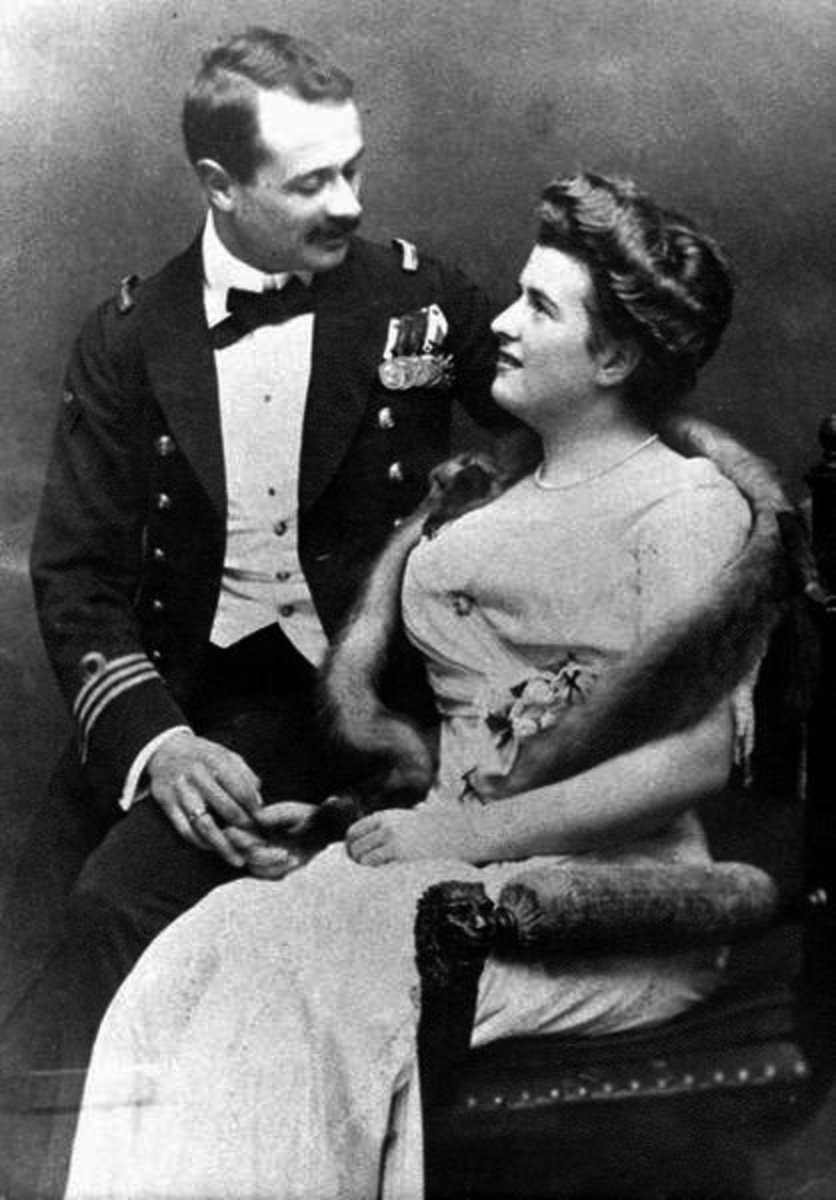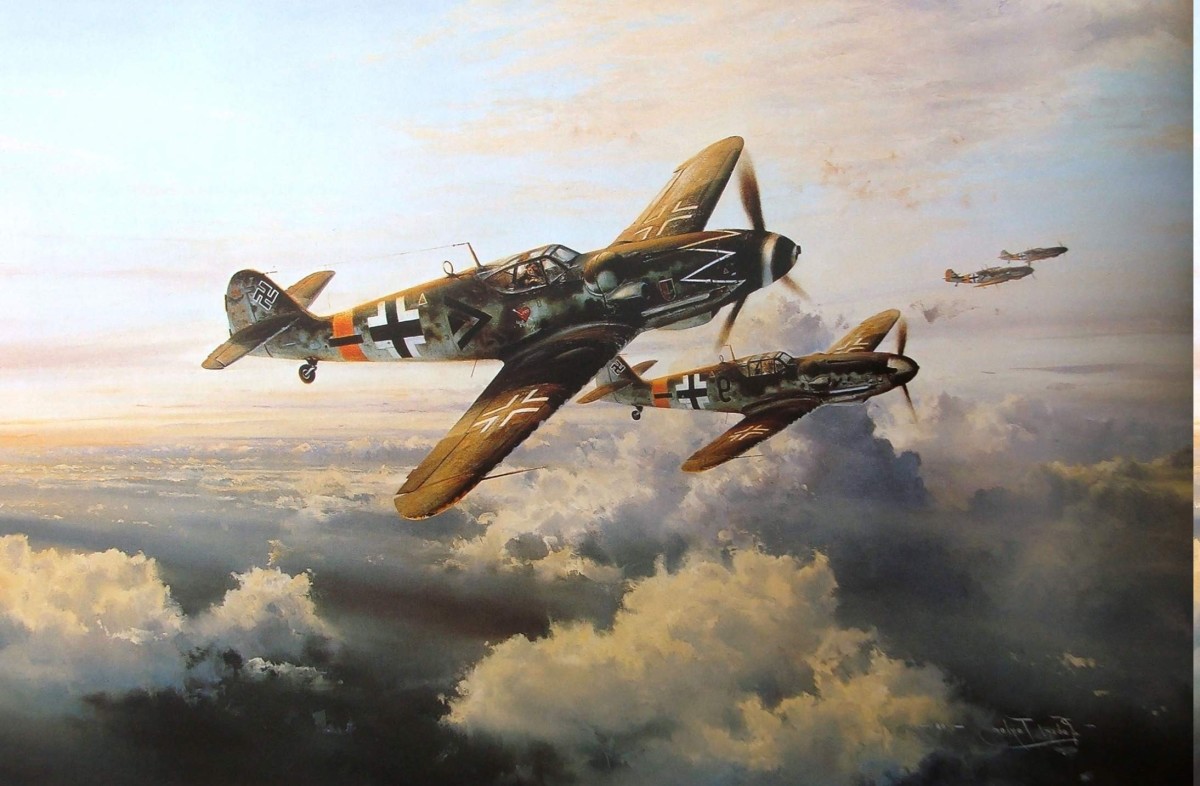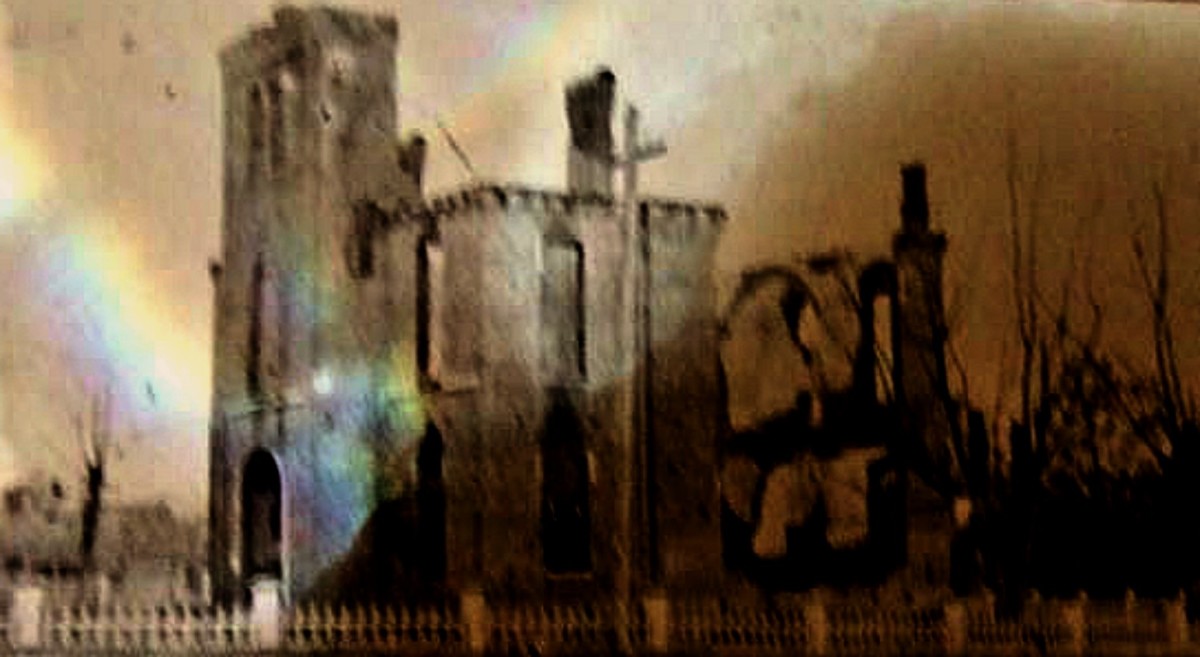On a Steed of Red, Baron von Richthofen Rides to War
First of the Fighter Pilots, Last of the Knights
As the best of the first generation of fighter pilots, Manfred von Richthofen is rightly remembered as “Ace of Aces”. Almost a hundred years later, past the turn of a new century, in a day of electronically controlled combat aircraft, Richthofen’s skills and tactics with the new technology of aircraft are still remembered and studied. But the Red Baron himself was in many ways the last of the knights, and he seems to belong like King Arthur to an older and more colorful world of knighthood, noble service, and glorious, if violent, combat.
Manfred von Richthofen
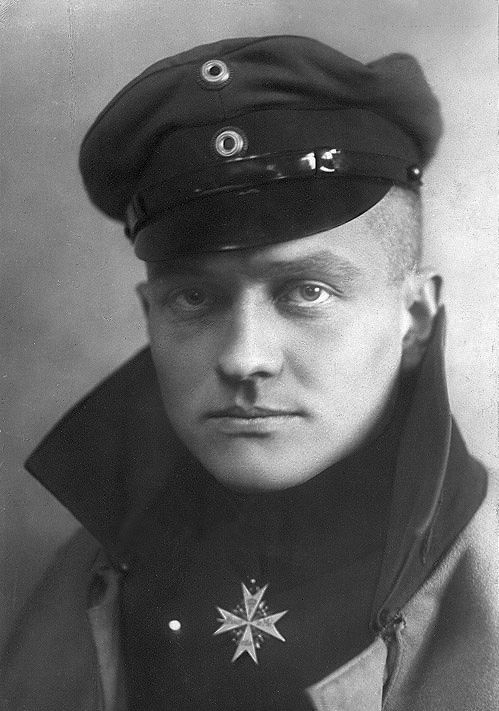
The Red Warhorse
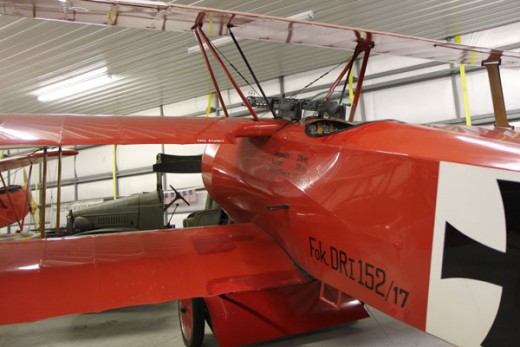
World War 1 Weapons of the Air
Manfred was actually a member of the nobility who did start the war riding a real horse as part of a cavalry unit. He became a rider of the skies when the lack of action led him to try the new flying machines.
And they were very new. When World War I started, powered flight was about ten years old. Pilots were older than piloting, and the rules of flight were being discovered by trial and (often fatal) error. A pilot who survived a battle or two might find himself the most experienced man in the sky.
At first, airplanes were used only for observation. But war on the ground spread to the skies, though often in a more gentlemanly form (after forcing down an enemy aircraft, one might land and shake hands with the defeated pilot) and in the end the agreement for peace demanded the destruction of those terrible German war machines, the airplanes.
Those killing machines that now look like colorful toys were often deadly to their own pilots. They had no brakes. Wings and engines didn’t always survive the forces of flight. Parachutes were not used until the end of the war (and then only on the German side), lest pilots be tempted to leave an airplane they could have landed. So when the fuel ran out, a propeller blade was shot off, or the engine caught on fire, the pilot could choose whether to die from jumping, crashing, or burning.
Manfred von Richthofen learned from his first battles. As a squadron commander, he taught his men what he knew, and the “Red Baron and his Flying Circus” came to be known and feared. But he also won his enemies’ respect. Even during the war, British and German publishers were negotiating to publish Richthofen’s book in England, for its valuable descriptions of air combat tactics. (“God save the King!” Richthofen responded.) After he was shot down, Richthofen’s enemies gave him a full military funeral.
Who Was the Red Baron?
When you think of the Red Baron, what comes to mind first?
War Hero Until 1918, Anachronism After
Manfred’s family had a long tradition of military service to the king. His younger brother Lothar was still serving with distinction in Manfred’s squadron at the end of the war. His father and mother were proud even in their grief to have provided two top aces for the defense of the Fatherland. But times, and attitudes, were changing fast. Kaiser Wilhelm II abdicated and fled; his cousin, the Russian Tsar, was forced off the throne, then killed. It was a strange new world that came out of the war, a war-sick Europe with a distrust of the feudal and nationalistic loyalties that had led the nations into war.
That's Entertainment
One fine day we flew our large battle plane to entertain the English with our bombs.
-- Manfred von Richthofen
The View from the Cockpit
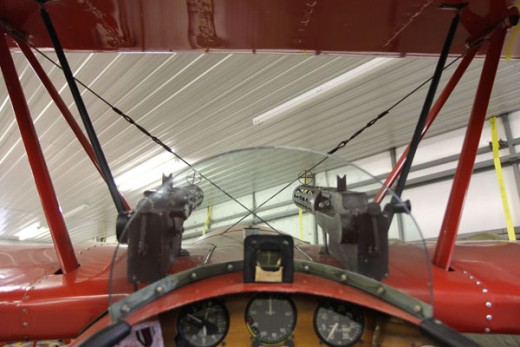
The World War 1 (and 2) Generation
But though tired of war, in twenty years Europe was fighting again as Germany, stinging from its defeat, re-armed. Many generals of World War II were the lieutenants of Richthofen’s generation. Many of Richthofen’s generation, who grew up with the ideals of knighthood, lived to see not only the jet age, but the moon landing. (Note: Another of Richthofen's generation was Baron Alexander von Meyer, the father of another HubPages author. Visit her "Gallipoli Star" article for a picture of von Meyer with von Richthofen.) And of course there was a German prominent in the moon landing effort: Werner von Braun. Von Braun was only 20 years younger than von Richthofen, in the generation of boys during WWI who would have idolized the famous pilots.
It is tempting to imagine von Richthofen in WWII. After all, it was Hermann Goering, who succeeded von Richthofen as squadron commander after his death, who led the Luftwaffe to defeat. Surely von Richthofen would have gone on to become part of the new technological age, probably being of great service to the Nazi war machine, though it would make a better alternative history for him to work against Hitler somehow....
But it is hard to picture how that eagerness for battle and the desire to serve his Kaiser that made him the Red Baron, would have fit in after 1918. The Red Baron doesn’t seem to fit on either side of WWII, and perhaps the best way to say it is that on April 21st, 1918, knighthood died with the Red Knight. The war that made him famous also dethroned kings, emperors, and dynasties, ending centuries of noble service to those kings. But in his brief life a new kind of knighthood was born, one in which no one surpassed him.
Quite Another Richthofen
I now have the gravest feeling that people have been exposed to quite another Richthofen than I really am. When I read my book, I smile at the insolence of it.
-- Manfred von Richthofen
The Story of the Red Knight (of the Air)
The Red Baron a medieval knight? It almost could have been. Here is a true story, not a fairy tale, about Manfred the Red Knight. Read the events in his own words, in his own book, if you don't believe it. Or check it against this article.
Richthofen Signature
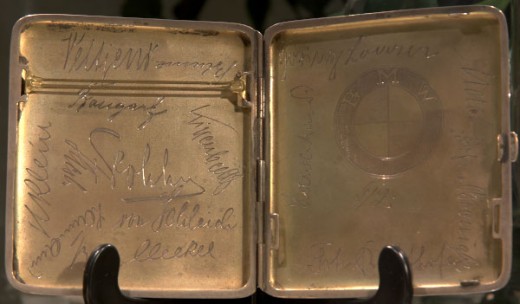
Test of Knighthood
It did not do to think about the trial ahead, about riding this snorting mount alone, showing he could direct it where he wished. But Manfred, not yet the Red Knight, could not stop thinking. He surveyed the steed with dismay, wishing he could say he was too afraid. But that could never be said by a defender of the king. He swallowed his cowardice and climbed on.
All at once he was riding. His steed obeyed beautifully: now a long curve to the left, now circling a tree. He pulled back, and his mount immediately slowed. He was riding so well – then suddenly, everything was wrong. His balance was wrong; they were heading the wrong way, and then he was on the ground. Surrounded by laughter, he looked sadly at the result of his clumsiness.
Two weeks later, he tried again. Proudly he dismounted, only to hear – another failure. Yet he persevered and won his spurs. He became the best known warrior of his era. In his brief life, he won the friendship and enmity of entire nations.
Manfred Tastes War
Manfred hated to be bored, and would create challenges where there were none. He was self-disciplined, with a quietness that was the silence of the hunter. He had feared war would never come. He rode armorless to his first battle, leading bold, daring young men, who eagerly scanned the horizon for signs of battle. Seeing nothing, they sadly dismissed the rumors of war. But only for a day. The tide of war finally reached them, and they tasted battle. Manfred found it fun. He wrote home that he hoped for another war so he could be at the start of that one also.
Most wars last a long time – at least, the time between battles seems long to a young man who loves excitement. So Manfred listened when an admired friend told him of a new sort of knight, one that rode fiery steeds far faster than Manfred’s. The nimble but unpredictable mounts were as dangerous as the battle itself; many riders had died of a fall. The world lay at the feet of these knights, but only the bravest attempted to join them. It was just what Manfred wanted.
So Manfred learned to ride all over again, and finally passed the trial. Fortunately for him, the best knights were great hunters, not great riders. Manfred learned to win battles by attacking an inexperienced opponent unexpectedly from the side.
Royal Treasure
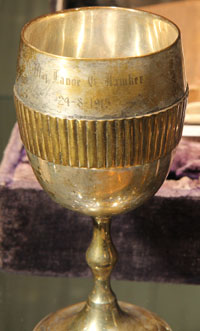
Why Not Quit
One of my superiors advised me to give up flying, saying it will catch up with me one day. But I would become miserable if now, honored with glory and decorations, I became a pensioner of my own dignity in order to preserve my precious life for the nation while every poor fellow in the trenches endures his duty exactly as I did mine.
-- Manfred von Richthofen
The Red Knight at War
He decorated his mount in blood red, to encourage friends and strike fear in foes. He became well known as the Red Knight, and the mere sight of him could cause an enemy to panic. Manfred’s followers rode to battle in many bright colors, but plain red was reserved for the great knight himself.
The Red Knight was a stern but strong leader. Other knights lived in castles far from the battle; the Red Knight made his camp next to the lines. Others fought two or three battles a day; the Red Knight sallied forth twice as often. Bad weather stopped others, not him. He welcomed as companions knights prepared to give true service to their king, but whoever was halfhearted in the fight was immediately sent away. As a result, the Red Knight outscored others tenfold.
Preparing for battle, Manfred would mount up, adjust his helmet, don his gauntlets, and salute. He went leaping and bucking down the field, holding his steed tightly in check to the point where he could race forward. Surveying what he called the “beautiful hunting ground” ahead of him, Manfred waited for his less experienced companions to select an opponent, then took on whoever was left. Manfred thundered past his opponent at a fearful rate, then turned to look back. Had he hit him? The foe seemed unhurt, but then slumped to the side. The enemy’s mount circled around, and around again, and fell at last to the ground. Manfred dismounted beside the body of his enemy and took a souvenir to remember his victory.
One contest pitted Manfred against the greatest English knight. Manfred did not recognize his helmeted opponent, but quickly realized this was no beginner, as he did not flee at the Red Knight’s approach. Round and round they went, neither able to seize the advantage. Manfred forced his opponent into a difficult position, but the Englishman waved cheerfully and swerved away. Manfred persisted, and in the end, the Englishman could not escape, and he fell. Manfred hung his enemy’s weapon over the door of his house, honoring a worthy opponent.
Site of the Red Baron's Last Battle
In 1916, the Somme was the site of one of the major battles of WWI, with a million casualties. On April 21, 1918, von Richthofen also died there.
The Last Battle
The English sent a band of knights whose sole mission was to kill the Red Knight. They failed. Manfred wrote a mocking letter, saying their promised reward should go to him instead.
The war was coming to an end. Though the Red Knight had singlehandedly defeated at least eighty of the enemy, his side was losing. Manfred was tired. A head wound he’d received hadn’t properly healed. Many of his friends had died in battle. He could not find the humor he’d used to describe his first battles. Yet, though he could have retreated to safety, as a war hero whose life was prized, he kept going out to battle, refusing to flee the danger the foot soldiers serving their king could not flee.
One April morning, Manfred selected an opponent, chased him out of the melee, and pursued him behind the battle lines. The terrified victim turned and twisted, trying to elude the great knight, leading him past…
Richthofen's Enemies Gave Him a Full Military Funeral
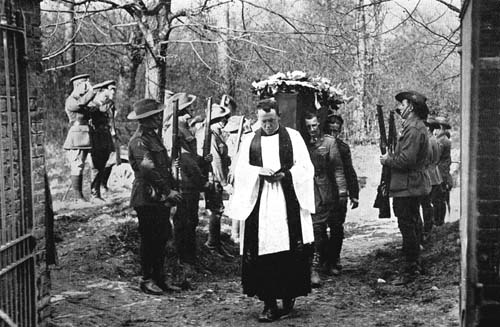
The End
... a gun that finally found its target. The Red Knight was shot down, and he died behind enemy lines. The year was 1918. The date was April 21st, when Manfred von Richthofen, the Red Baron, Ace of Aces, and Red Knight of the Air, died in a red tri-plane that today may be the best-known symbol of World War I.
Recommended Books about the Red Baron
Titler, Dale M. The Day the Red Baron Died: Final Proof that Ground Fire Brought Von Richthofen Down. New York: Ballantine Books, 1970
Udet, Ernst. The Ace of the Iron Cross. Edited by Stanley M. Ulanoff. Translated by Richard K. Riehn. Garden City, New York: Doubleday & Company, Inc., 1970
Von Richthofen, Manfred. The Red Baron: The Fabled Ace’s Story in His Own Words. Edited by Stanley M. Ulanoff. Translated by Peter Kilduff. New York: Ace Books, 1969


